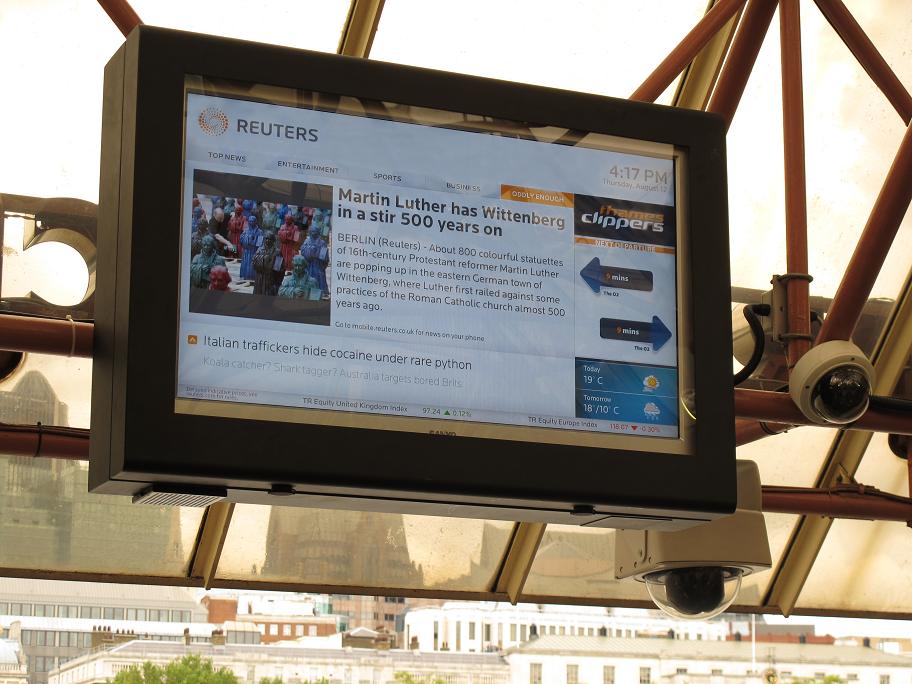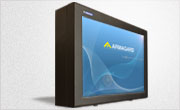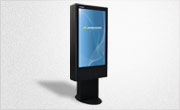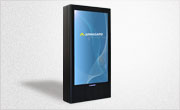Outdoor LCD Enclosure – One Temperature Extreme to the Other
Posted by: Richard Williams | Posted on: | 0 Comments
An Outdoor LCD Enclosure has a lot to contend with. Weather elements such as rain, sleet, snow or hail all need protecting against, while outdoor screens need also to be rugged to ensure they are not smashed through accident or vandalism. But an outdoor LCD Enclosure faces other challenges too, namely in the wide range of temperatures that they face during the different seasons.

An LCD enclosure needs to be protected against external temperatures
Because most outdoor digital signage screens need to function throughout the year, it means they need also to cope with a wide range of temperatures. In many locations, the difference between summer temperatures and those faced in the winter can be quite stark, with some locations experiencing blazing sun in summer, and freezing cold in the winter.
An LCD Enclosure is designed to cope with this huge seasonal swing in temperatures and they use some sophisticated systems to maintain a stable internal environment for LCD screens, regardless of ambient temperatures.
LCD Enclosure in Summer Heat
Overheating is a common problem for outdoor screens in the summer. Not only do screens need to be kept cool because of ambient temperatures, but also the screens themselves generate a lot of heat when operating, which also needs to be taken care off.
An LCD enclosure copes with this by using cooling fans to transfer heat away from the LCD screen and bring in cooler fresh air. In indoor systems, this is done with a series of air vents, but obviously, in outdoor locations this is not possible because of the need to keep rainfall out of the screen. To counter this problem, an outdoor LCD screen uses a series of chambers that allow air in and out but prevent moisture and liquid from getting in. In some locations that suffer extreme heat in the summer, additional cooling devices such as air conditioners need installing to prevent any possible overheating.
LCD Enclosure in Winter Cold
Just as overheating can easily disable an LCD screen, so can freezing temperatures. When temperatures drop below zero, metals contract and can become brittle, this can lead to wiring breaking. Furthermore, freezing temperatures also causes any trapped condensation to expand which can damage the electronics of an LCD screen.
To make sure internal temperatures remain above freezing, an LCD enclosure employs several methods. The first is to switch off the cooling fans, thermostatically. This enables the heat generated from the screen to keep the internal temperature of the LCD enclosure above zero. However, when temperatures drop to well-below freezing this is often not enough to maintain a high enough internal temperature so thermostatically controlled heaters are used to warm the inside of the LCD enclosure and maintain the correct operating temperature for the screen.
Post shortlink:
Popular Products
LCD Enclosure
Need armor for your LCD/LED screen(s)? Outdoors or inside the versatile LCD enclosure protects against thieves, vandals & the weather. Installation idea: NFL stadiums.
Outdoor Digital Signage
Exclusive 46” outdoor screen protection. Dubbed the ‘Totem’, due to its distinct design, it repels damage threats, but attracts audiences. Installation idea: Drive-thru restaurants.
Portrait Flat Panel Enclosure
Safeguard your eye-level advertising display screen(s), indoors or outdoors. Completely customizable, add exciting features like touch screen technology. Installation idea: Restaurant frontages.
Indoor Digital Signage
Popular purchase for retail outlets! Great for ‘point of sale’ persuasion, boost your brand with static & motion advertising from a single unit! Installation idea: Mall of America.




